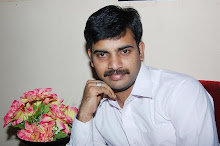A couple of kilometers from Sreekariyam in the suburbs of Thiruvananthapuram is Madavoorpara cave temple, one of the various ancient rock cut cave temples that dot the small state. The drive from Sreekariyam to the temple is delightful as it is a welcome break from the hustle and bustle of the city. Paddy fields, plantain groves, and rubber plantations greets you on either side of the road.
More than two hundred and thirty stone-cut steps may seem like a little daunting, but is truly fascinating also. Hewn, chipped an carved on the steep side of the rock, and facing westward, the cave's sanctum sanctorum has this "Sivalinga" which is "guarded" by the two sculptures of dwarapalakas one each on either side of the entrance.Idols of Murugan and Ganapathy are there on two sides, done in relief style. The ornamental door at the opening is apparently a recent addition.
Devotees can have a fairly close darshan from behind the iron bars.The antiquity of the temple and the probable period of its construction are rather enshrouded in a haze of myths and hearsay.There are scores of legends about the origin of the cave shrine. As per one, it was built by a Buddhist monk centuries ago, while another holds the builder to be a Jaina muni. Situated more or less within a stone's throw from the cave, the sastha temple is much older than the former.And significantly, the place is known as Sasthavanam.
A sprawling hilltop is reached through the smooth eastern route, which is a cynosure to the eyes.
A pair of rock formations that resemble human figures, one standing and the other sitting, is perched precariously on the edge above a steep decline. Beyond the two is "Kindikkulam", a little pond that seldom dries up.






















































